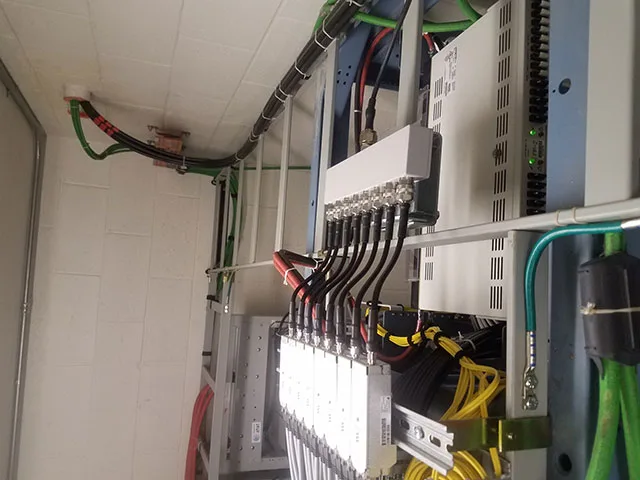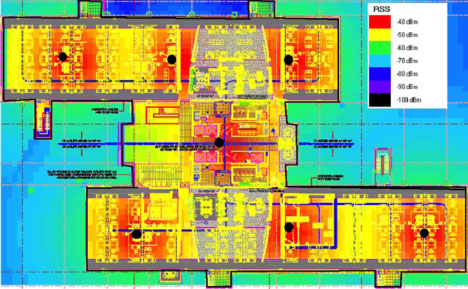
Client: Riverstone Exchange Tower
Integrator: Maximum Communications
Location: Downtown urban core, 52 floors + 4 subgrade levels
Sector: Class-A offices, retail, food court, and a boutique hotel (1,900+ occupants peak)
Riverstone Exchange Tower had trouble with cell service in lifts, garages below ground, mechanical floors and deep interior suites. Carriers said there were a lot of dropped calls, and users saw slow data and call failures, especially during busy times. Maximum Communications created and installed a neutral-host Distributed Antenna System (DAS) that can handle multiple operators and bands. It also has room for 5G upgrades. The building passed the on-air acceptance test on the first try. After going live, the metrics show a huge improvement in coverage, quality, and user experience.
Highlights:
Riverstone Exchange Tower is a high-traffic, mixed-use property with complex RF environments. Steel-reinforced cores, mirrored façades, and dense mechanical spaces created heavy signal attenuation. Tenants include financial services, tech firms, and a hotel operator. Reliable indoor coverage is a lease differentiator, influences guest ratings, and is essential for life-safety notification.
Persistent RF shadowing in elevator banks and service corridors generated hard dead zones, while garages G1–G4 repeatedly measured RSRP below -110 dBm. Multi-carrier asymmetries, distinct anchor bands and disparate power policies, forced meticulous uplink/downlink gain budgeting to prevent noise rise and desense. Vertical distribution across 52 occupied floors plus subgrade levels required a riser-aware, sectorized topology to control PIM risk, manage coaxial loss, and localize handoff domains. Tight construction windows, hotel quiet hours and mixed office tenancy, necessitated night and weekend execution with rapid, end-of-shift site restoration and zero-defect turnover each morning.
RF survey & iBwave modeling. Maximum Communications executed a full multi-band, multi-operator benchmark, capturing anchor and supplemental carriers with walk, drive, and garage sweeps, then translated findings into iterative iBwave designs. Priority zones, garages, elevator cores, trading floors, conference facilities, and hotel back-of-house, were modeled first to anchor the link budget and define sector boundaries.
Calibrated heat maps drove antenna density, placement, and downtilt, while riser-by-riser loss models set feeder sizes, split ratios, and passive component selection. The result was a sectorized plan that balanced uplink headroom with downlink SINR, constrained leakage into nonpriority areas, and provided a build sequence compatible with after-hours access and fast nightly restoration.

The build was sequenced per riser stack: garages and core levels first, then podium retail, then office floors, and finally hotel spaces. Work occurred during low-traffic windows to avoid guest and tenant impact.
Key steps:
Documentation included as-builts, optical loss budgets, sweep files, sector maps, and acceptance results.
After activation, Maximum Communications performed joint testing with carriers and property management.
Coverage & Quality
User Experience & Capacity
Operations

“Our guest scores mentioned better phone service in rooms and elevators within weeks. The difference is real on sold-out weekends.”
Hotel Operations Manager
“We saw a big drop in helpdesk tickets about coverage. Trading floors hold calls now, even during market open.”
Tenant Facilities Lead
Riverstone plans to light 5G NR mid-band on two sectors serving the lobby and conference levels. The neutral-host DAS has reserved rack space, RU capacity, and fiber to support this without construction in tenant suites.
Maximum Communications designs, builds, and maintains in-building wireless systems that meet carrier and AHJ requirements, neutral-host DAS, public safety BDA/ERCS, and fiber backbones. We handle the full lifecycle from survey and iBwave design to installation, optimization, and SLA-backed care.